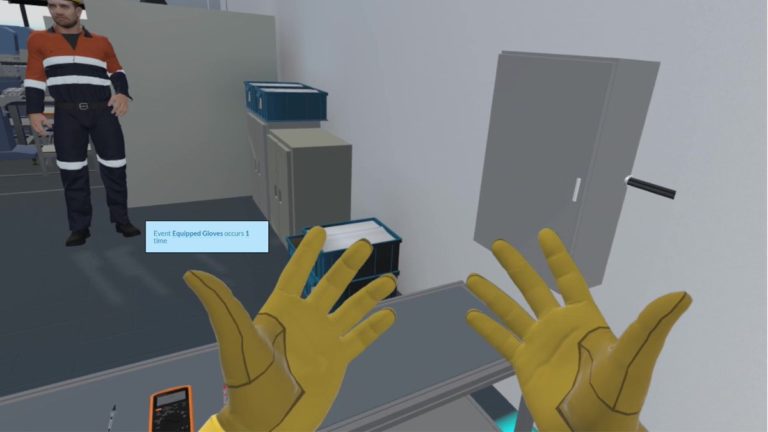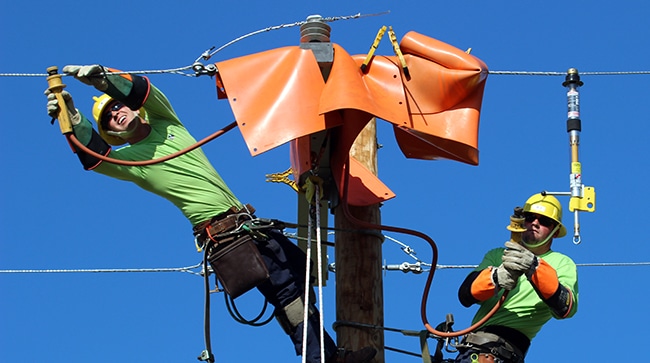
This article is the latest in AR Insider’s editorial contributor program. Find out more or contact us to participate here. Authors’ opinions are their own.
VR Training For Complex & Dangerous Scenarios
How to Successfully Implement
by Albert Liu
The benefits of VR for improving learning outcomes has been clear for some time. Companies across many industries have adopted the technology to train their employees better. For example, enterprises have seen dramatic cuts in costs and time spent training.
But the successful implementation of VR comes with challenges as well. It’s necessary to be aware of these challenges when designing training programs.
In this article, I’ll highlight the challenges we faced when onboarding VR for training, what we learned and how we overcame them.
The Old Way of Doing Things
Our first challenge came last year when we were brought on-site to a training facility to get familiar with how electrical lineworkers were being trained.
What we saw concerned us:
— Trainees were exposed to dangerous situations.
— Evaluation was being done subjectively.
— It relied on individual trainers to deliver procedures which had drifted over time.
— Learnings were inconsistent between trainees.
During our time there, we saw a trainee suspended 50 feet up in the air between electrical wires and a bucket truck.

We were told it was his first time up there and he had no prior experience. He was being trained to perform a load break switch. This is a 30-step procedure that’s done to safely switch load currents. Beside us on the ground, an instructor shouted verbal commands to the trainee.
He didn’t have any materials or checklists to reference.
Finally, after what seemed like an eternity, the trainer said “it looked good” and to come down.
The Challenge of Implementing VR
One of the biggest challenges in implementing new systems and technologies is getting buy-in from the employees. They may resist change because they’re used to how things have been done traditionally. We tried to introduce VR for both training and evaluation.
However, we saw the instructors applying the same processes into VR. This meant we still faced many of the same issues from before: The evaluation was still being done anecdotally and the learning outcomes were inconsistent. We realized that we needed a more systematic approach to evaluating behavior in VR.
“Instead of looking at technology first, I think we should go back to what the issues and problems are with training,” said Dr Timothy Jung, Director and Founder of the AR and VR Hub, Manchester Met University. “Expertise involvement is so important. We should ask if there is any way technology can help as a tool.”
The use of VR doesn’t improve training outcomes by itself.
“If you try to force a solution, there is usually resistance,” Jung added. “The frontline should be consulted first, to work out what type of technology could support what they are already trying to do,”
A New Approach to Training
We took these learnings to another use case. The employees were training to perform a Lockout-tagout procedure. To systematically evaluate employee behavior in VR, we set out to remove much of the human element.
VR gives us the ability to tag events and objects within the experience to provide context to the actions being performed by employees. For example, it automatically records when a tool is picked up or when the employee looks at something of interest.

This made it easy to directly measure results. With a few clicks, instructors were able to define the steps required for employees to be successful based on their goals.
Then they broke down how employees performed in each step. Instructors were able to see where the bottlenecks were and where employees struggled.
The results we received from the training program were clear:
— 59 percent increase in knowledge retention.
— 40 percent increase in compliance.
— 20 percent decrease in task duration.
The instructors were able to find out:
— Are employees noticing hazards?
— Are the steps being completed in the right sequence?
— Are employees doing critical actions in a timely manner?
“Trainers can systematically determine employee success based on the actions they take within the simulation,” said Tony Bevilacqua, Founder & CEO of Cognitive3D. “This is especially beneficial for complex or dangerous procedures where identifying hazards and enforcing compliance are critical.”
Another advantage of VR is that it’s more in-depth compared to other training methods. As mentioned earlier, training in real-world scenarios is anecdotal. In contrast, actions in VR can be quantified so you can understand exactly how each action was performed.
The result is a data-rich, contextual timeline of all the actions which took place during the session.
This provides a reinforced feedback loop that results in continual improvements. Employee progress can be tracked as they progress through the existing LMS, making VR simulations an integrated component of the enterprises learning strategy.
Next Steps
The biggest advantage of using VR to train employees is the ability to iterate. By understanding which behaviors lead to success, you can encourage and redesign the training programs.
This provides additional feedback and a deeper understanding of human behavior. The systematic approach to improving learning ensures that processes are followed to deliver best practices to the employees.
Put another way, let your employees make dangerous mistakes in VR and not in real-world scenarios where the stakes are much higher.
 Albert Liu is Product Marketing Manager at Cognitive 3D.
Albert Liu is Product Marketing Manager at Cognitive 3D.
